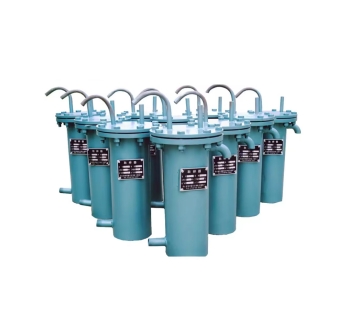Gas liquid sampling cooler is a kind of equipment specially used for cooling gas and liquid samples at high temperature or normal temperature, which is widely used in laboratories and small heating and heat exchange systems in petroleum, chemical, light industry, electric power and other industries. When the sample enters the cooler, the coolant creates a cooling environment around the sample, reducing the temperature of the sample through heat conduction. At the same time, the cooler itself also has good insulation performance to avoid the influence of external heat sources during the cooling process of the sample.

Structural characteristics
Cooling structure: The sample cooler generally adopts a spiral tube surface cooling structure, which can effectively improve the heat transfer efficiency and ensure rapid cooling of the sample.High temperature pressure sampling system
Material selection: The sampling pipe is usually made of durable, corrosion-resistant high-quality stainless steel pipe to avoid the sample being contaminated by metal corrosion in the pipe during the sampling process.
Valve configuration: The sampling duct near the cooler should be equipped with two valves, the valve near the sampling point is the stop valve, and the one behind is the needle throttle valve. This configuration allows for easy adjustment of sample flow and temperature, ensuring accuracy and safety in the sampling process.
According to the nature of the operating medium, temperature, pressure and the required heat transfer area selection. There are three types: HCYLQ-Ⅰ, HCYLQ-Ⅱ and HCYLQ-Ⅲ.


A sampling system usually refers to a system that can intermittently (or discretely) sample a continuous signal and convert it into a discrete signal (such as a pulse train or a digital sequence) for subsequent processing or storage.Custom sampling system At the heart of this process is the sampling technique, which obtains a series of discrete signal values by measuring a continuous signal at a specific point in time (sampling point).
A sampling system usually refers to a system that can intermittently (or discretely) sample a continuous signal and convert it into a discrete signal (such as a pulse train or a digital sequence) for subsequent processing or storage.Custom sampling system At the heart of this process is the sampling technique, which obtains a series of discrete signal values by measuring a continuous signal at a specific point in time (sampling point).
A sampling system usually refers to a system that can intermittently (or discretely) sample a continuous signal and convert it into a discrete signal (such as a pulse train or a digital sequence) for subsequent processing or storage.Custom sampling system At the heart of this process is the sampling technique, which obtains a series of discrete signal values by measuring a continuous signal at a specific point in time (sampling point).



